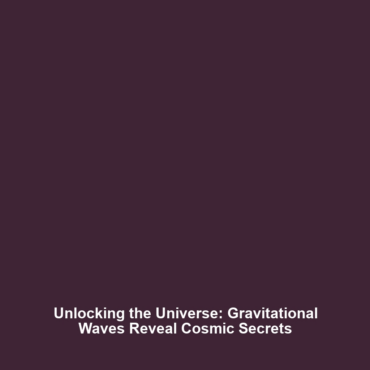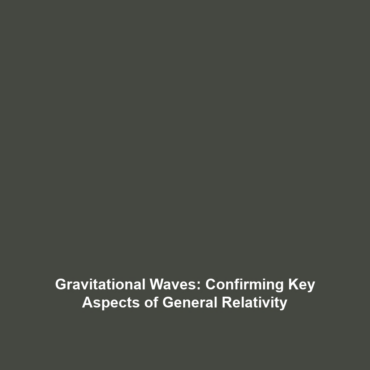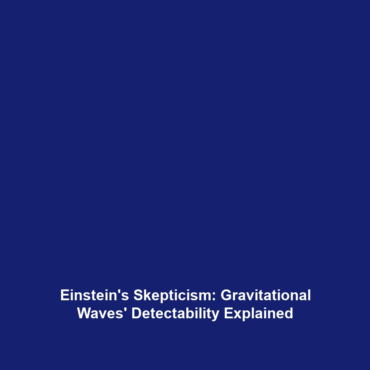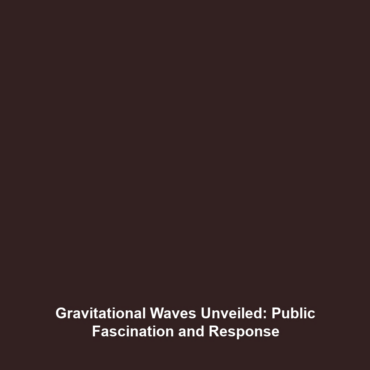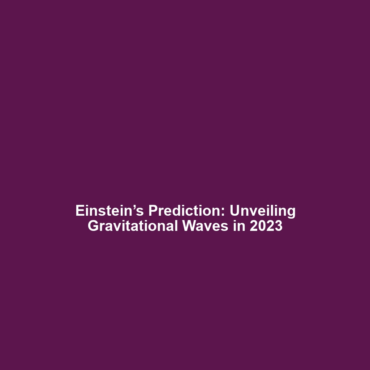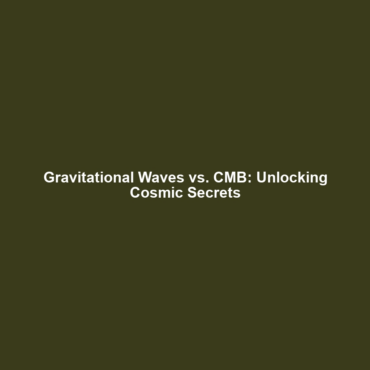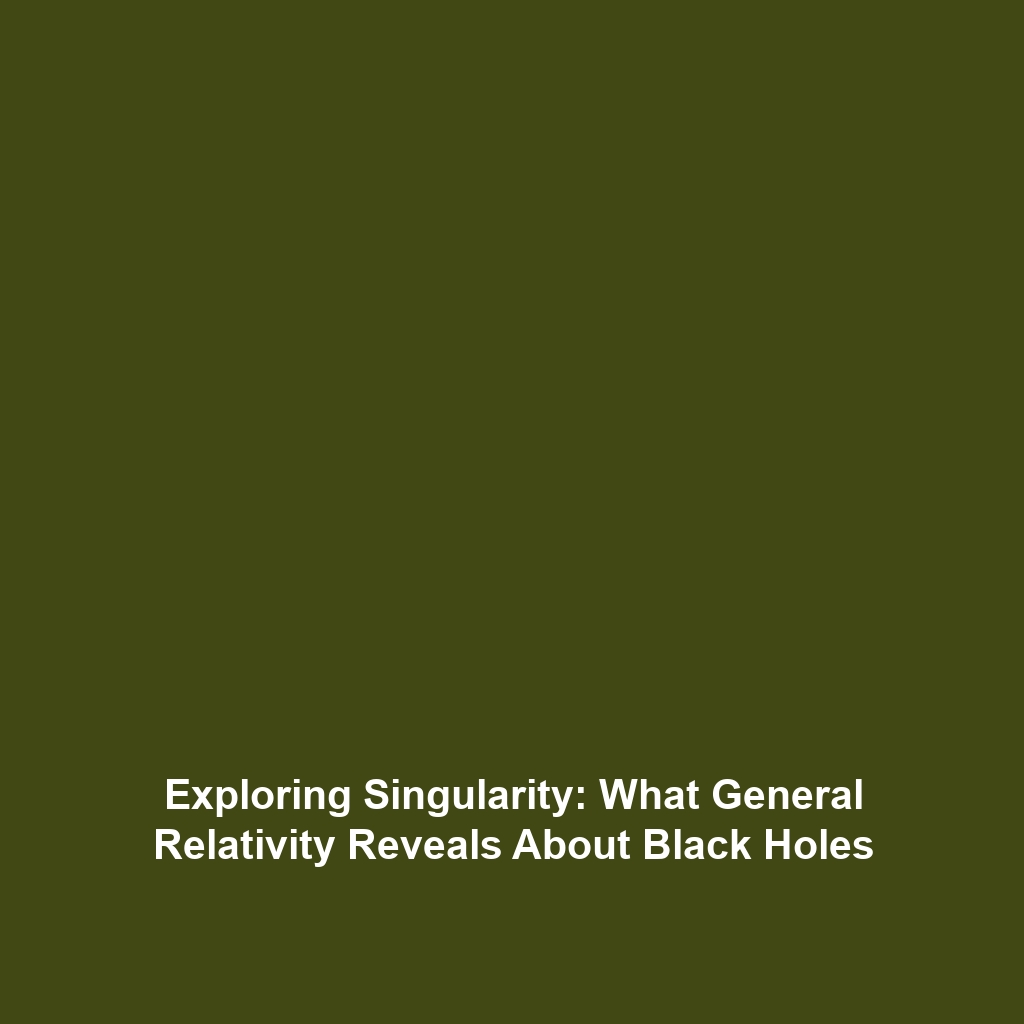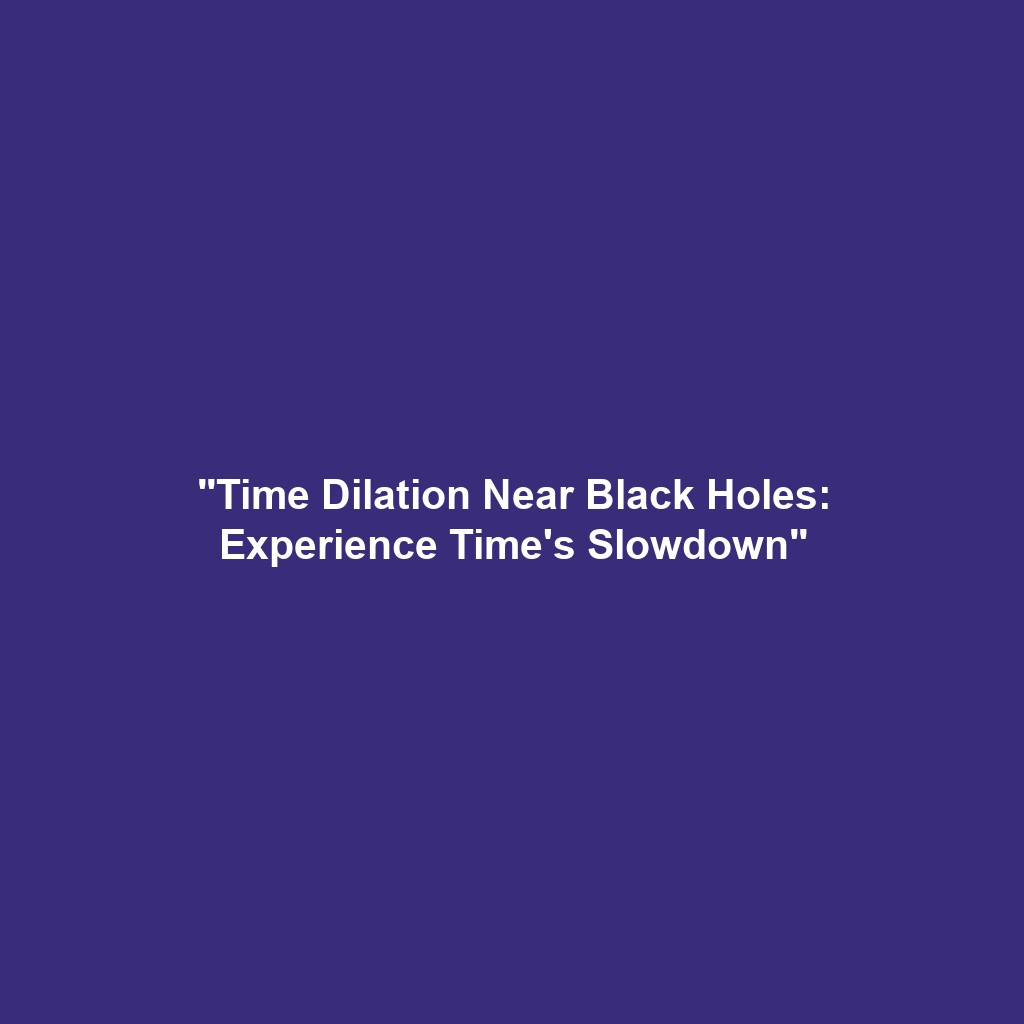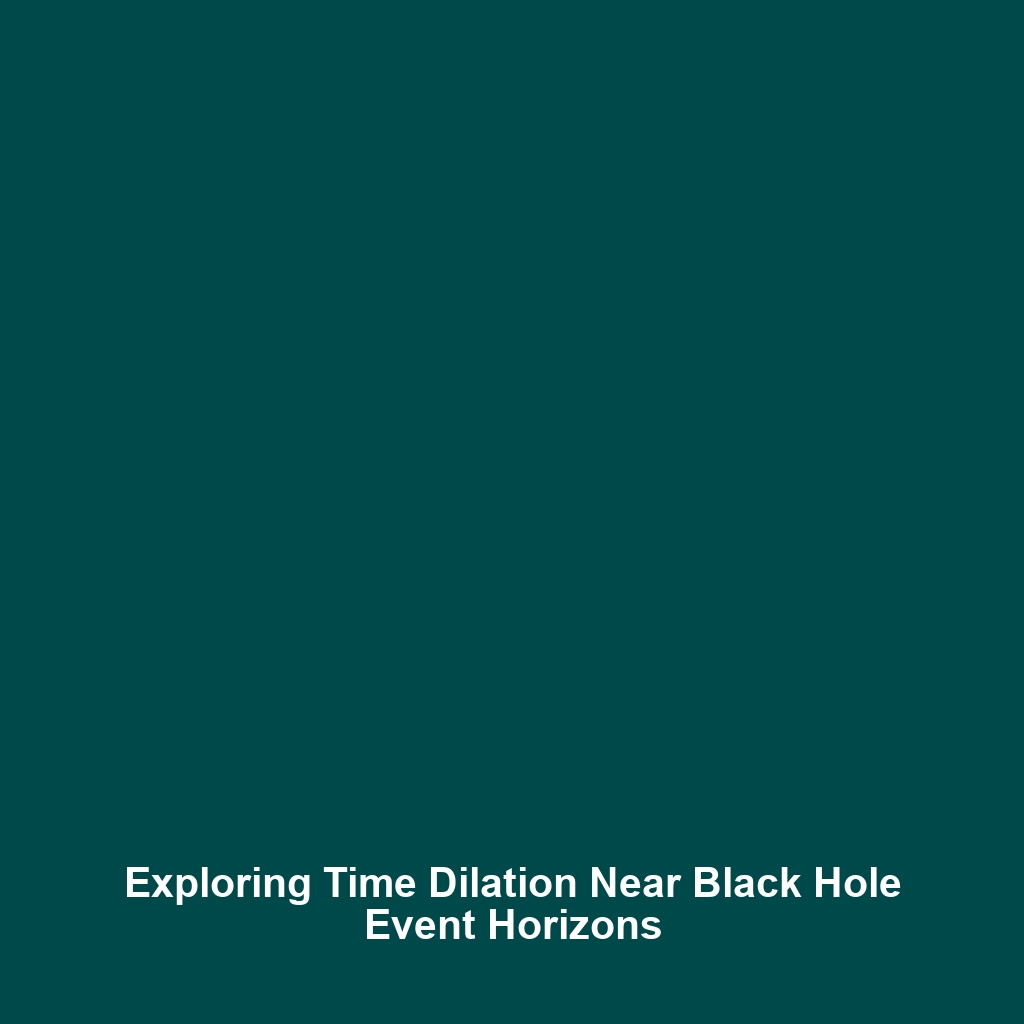What Distant Cosmic Events Can Gravitational Waves Help Us Understand?
Introduction
Gravitational waves are ripples in spacetime caused by some of the universe’s most violent and energetic processes. They enable us to observe distant cosmic events, such as the collision of black holes and neutron stars, in ways that were previously unimaginable. Understanding these events is significant not only for astrophysics but also for our comprehension of fundamental physics. This article explores how gravitational waves illuminate distant cosmic phenomena and their broad implications within the scientific community.
Key Concepts
The Nature of Gravitational Waves
Gravitational waves were first predicted by Albert Einstein in 1916 through his General Theory of Relativity. These waves carry information about their origins and help scientists understand the nature of gravity itself. When massive celestial bodies like black holes or neutron stars merge, they produce gravitational waves, allowing researchers to measure such events across galaxies.
Cosmic Catastrophes and Phenomena
Some of the distant cosmic events that gravitational waves can help us investigate include:
- The merger of binary black holes
- Neutron star collisions, which can also emit electromagnetic radiation
- Supernova explosions representing the death of massive stars
These events not only enhance our understanding of stellar evolution but also help us test theories of gravity.
Applications and Real-World Uses
Gravitational waves represent a groundbreaking tool in observational astrophysics. The applications include:
- Detection of Cosmic Events: Gravitational wave observatories like LIGO (Laser Interferometer Gravitational-Wave Observatory) are used to detect and analyze gravitational waves from cosmic collisions.
- Multi-Messenger Astronomy: By studying gravitational waves alongside electromagnetic signals, we gain a holistic view of cosmic phenomena, enabling deeper insights into stellar processes.
These applications illustrate how gravitational waves are used in astrophysics research, constituting critical advances in our understanding of the universe.
Current Challenges
Despite the significant strides made in the field, researchers face several challenges and limitations:
- Noise Interference: Vibrations from Earth or other sources can interfere with gravitational wave signals, complicating data analysis.
- Detection Sensitivity: Current observatories have limitations in range and sensitivity, hindering our ability to detect more distant events.
- Data Analysis Complexity: The large amounts of data produced require advanced algorithms and computational power to interpret meaningful results.
Future Research and Innovations
Ongoing research aims to enhance gravitational wave detection and analysis techniques. Innovations include:
- Advanced Interferometers: Future programs aim to build more sensitive detectors that can capture more faint gravitational signals.
- Space-based Detectors: Projects like LISA (Laser Interferometer Space Antenna) will increase the range of detectable waves by placing detectors in space.
These advancements are expected to provide even greater insights into the fabric of the cosmos, expanding our understanding of gravitational dynamics.
Conclusion
Gravitational waves serve as a crucial gateway to understanding distant cosmic events. From the mergers of stellar remnants to insights into the very fabric of spacetime, these phenomena enhance our knowledge of the universe and test the limits of our physical theories. Continued research in this field promises not only to unveil new cosmic secrets but also to revolutionize our approach to astrophysical inquiries. For more information on gravitational waves and related topics, visit our related articles section.
